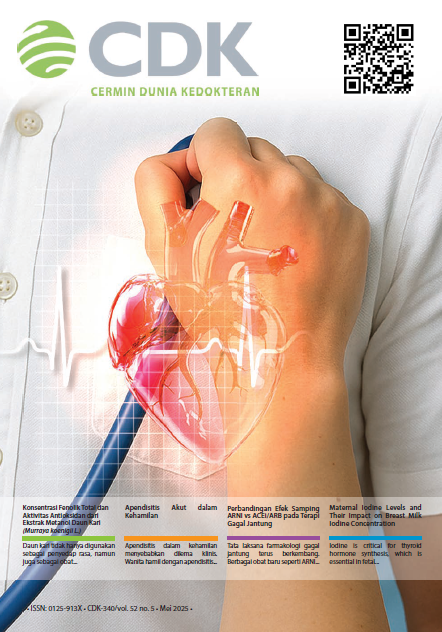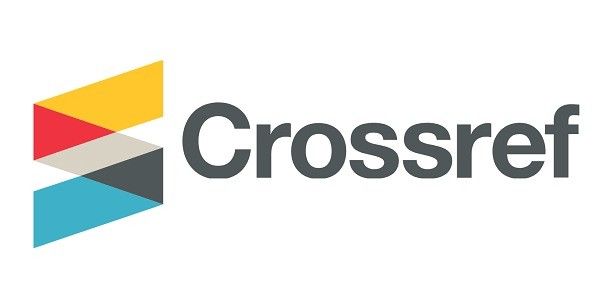The Association between Electrophysiology Profile and Risk of Cardiovascular Events: A Systematic Review
Analysis
DOI:
https://doi.org/10.55175/cdk.v52i5.1577Keywords:
Cardiovascular events, electrophysiology profle, mortalityAbstract
Introduction: Cardiovascular diseases (CVDs) are the leading cause of death, accounting for 31% of global mortalities. This systematic review explores the role of electrophysiological profles in cardiovascular prevention, focusing on their integration into risk management protocols. Methods: A comprehensive review was conducted using the PubMed database, adhering to PRISMA guidelines. Of the 1,050 identifed studies, 10 met the inclusion criteria and were assessed for quality using the STROBE method. Results: Key electrophysiological markers were identifed as signifcant predictors of cardiovascular events. Abnormalities in Holter monitoring, such as a turbulence slope (TS) ≤25 ms/RRI, are strongly correlated with sudden cardiac death (HR 4.7). Prolonged QT intervals in ECG were linked to increased mortality from cardiac arrest (HR 2.4) and heart failure (HR 1.74). ST-segment depression during exercise stress testing was a strong predictor of coronary heart disease death (HR 2.47), especially during the recovery phase (HR 4.01). Discussion: Electrophysiological markers like Holter monitoring, ECG fndings and exercise stress testing are valuable for identifying high-risk individuals. Their integration into routine screening could improve early detection and prevention strategies, further research is needed to standardize protocols.
Downloads
References
Thygesen K, Alpert JS, Jafe AS, Chaitman BR, Bax JJ, Morrow DA, et al.; Executive Group on behalf of the Joint European Society of Cardiology (ESC)/American College of Cardiology (ACC)/American Heart Association (AHA)/World Heart Federation (WHF) Task Force for the Universal Defnition of Myocardial Infarction. Fourth universal defnition of myocardial infarction (2018). J Am Coll Cardiol. 2018;72(18):2231-64. DOI: 10.1016/j.jacc.2018.08.1038. PMID: 30153967.
Amsterdam EA, Wenger NK, Brindis RG, Casey DE Jr, Ganiats TG, Holmes DR Jr, et al. 2014 AHA/ACC guideline for the management of patients with non-ST-elevation acute coronary syndromes: A report of the American College of Cardiology/American Heart Association Task Force on Practice Guidelines. J Am Coll Cardiol. 2014;64(24):e139-e228. DOI: 10.1016/j.jacc.2014.09.017.
Cuschieri S. The STROBE guidelines. Saudi J Anaesth. 2019;13(Suppl 1):31-4. DOI: 10.4103/sja.SJA_543_18. PMID: 30930717; PMCID: PMC6398292.
Yap J, Jin AZ, Nyunt SZ, Ng TP, Richards AM, Lam CS. Longitudinal community-based study of qt interval and mortality in southeast asians. PLoS One 2016;11(5):e0154901. DOI: 10.1371/journal.pone.0154901. PMID: 27148971; PMCID: PMC4858262.
Gibbs C, Thalamus J, Heldal K, Holla OL, Haugaa KH, Hysing J. Predictors of mortality in high-risk patients with QT prolongation in a community hospital. Europace 2018;20(FI1):f99-f107. DOI: 10.1093/europace/eux286. PMID: 29036623.
Laukkanen JA, Makikallio TH, Rauramaa R, Kurl S. Asymptomatic ST-segment depression during exercise testing and the risk of sudden cardiac death in middle-aged men: A population-based follow-up study. Eur Heart J. 2009;30(5):558-65. DOI: 10.1093/eurheartj/ehn584. PMID: 19168533; PMCID: PMC2721711.
Makikallio TH, Barthel P, Schneider R, Bauer A, Tapanainen JM, Tulppo MP, et al. Prediction of sudden cardiac death after acute myocardial infarction: role of Holter monitoring in the modern treatment era. Eur Heart J. 2005;26(8):762–9. DOI: 10.1093/eurheartj/ehi188. PMID: 15778204.
Rankinen J, Haataja P, Lyytikainen LP, Huhtala H, Lehtimaki T, Kahonen M, et al. Prevalence and long-term prognostic implications of prolonged QRS duration in left ventricular hypertrophy: A population-based observational cohort study. BMJ Open 2022; 12(2): e053477. DOI: 10.1136/bmjopen-2021-053477. PMID: 35228283; PMCID: PMC8886432.
Deedwania PC, Carbajal EV. Silent ischemia during daily life is an independent predictor of mortality in stable angina. Circulation 1990;81(3):748-56. DOI: 10.1161/01.cir.81.3.748. PMID: 2306826.
Raiha IJ, Piha SJ, Seppanen A, Puukka P, Sourander LB. Predictive value of continuous ambulatory electrocardiographic monitoring in elderly people. BMJ. 1994;309(6964):1263-7. DOI: 10.1136/bmj.309.6964.1263. PMID: 7888847; PMCID: PMC2541781.
Lindow T, Ekstrom M, Brudin L, Carlen A, Elmberg V, Hedman K. Typical angina during exercise stress testing improves the prediction of future acute coronary syndrome. Clin Physiol Funct Imaging 2021;41(3):281-91. DOI: 10.1111/cpf.12695. PMID: 33583090.
Boden WE, O’Rourke RA, Teo KK, Hartigan PM, Maron DJ, Kostuk WJ, et al; COURAGE Trial Research Group. Optimal medical therapy with or without PCI for stable coronary disease. N Engl J Med. 2007 Apr 12;356(15):1503–16. DOI: 10.1056/NEJMoa070829. PMID: 17387127.
Erne P, Schoenenberger AW, Zuber M, Burckhardt D, Kiowski W, Dubach P, et al. Efects of anti-ischaemic drug therapy in silent myocardial ischaemia type I: the Swiss interventional study on silent ischaemia type I (SWISSI I): A randomized, controlled pilot study. Eur Heart J. 2007 Sep;28(17):2110–7. DOI: 10.1093/eurheartj/ehm273. PMID: 17644512.
Tsuji H, Larson MG, Venditti FJ, Manders ES, Evans JC, Feldman CL, et al. Impact of reduced heart rate variability on risk for cardiac events: the Framingham heart study. Circulation 1996;94(11):2850-5. DOI: 10.1161/01.CIR.94.11.2850.
Erne P, Schoenenberger AW, Burckhardt D, Zuber M, Kiowski W, Buser PT, et al. Efects of percutaneous coronary interventions in silent ischemia after myocardial infarction: the SWISSI II randomized controlled trial. JAMA. 2007;297:1985–91. DOI: 10.1001/jama.297.18.1985. PMID: 17488963.
Cho Y, Yoon M, Kim J, Lee JH, Oh IY, Lee CJ, et al. Artifcial intelligence-based electrocardiographic biomarker for outcome prediction in patients with acute heart failure: Prospective cohort study.J Med Internet Res. 2024; 26:e52139. DOI: 10.2196/52139. PMID: 38959500; PMCID: PMC11255523.
Downloads
Published
How to Cite
Issue
Section
License
Copyright (c) 2025 Muhammad Haris Firdaus, Mirza Alfiansyah

This work is licensed under a Creative Commons Attribution-NonCommercial 4.0 International License.





















